Truemmefrauen Series
Schwarz/Weiss Bilder mit Tinten, Bleistift, Aquarelle.

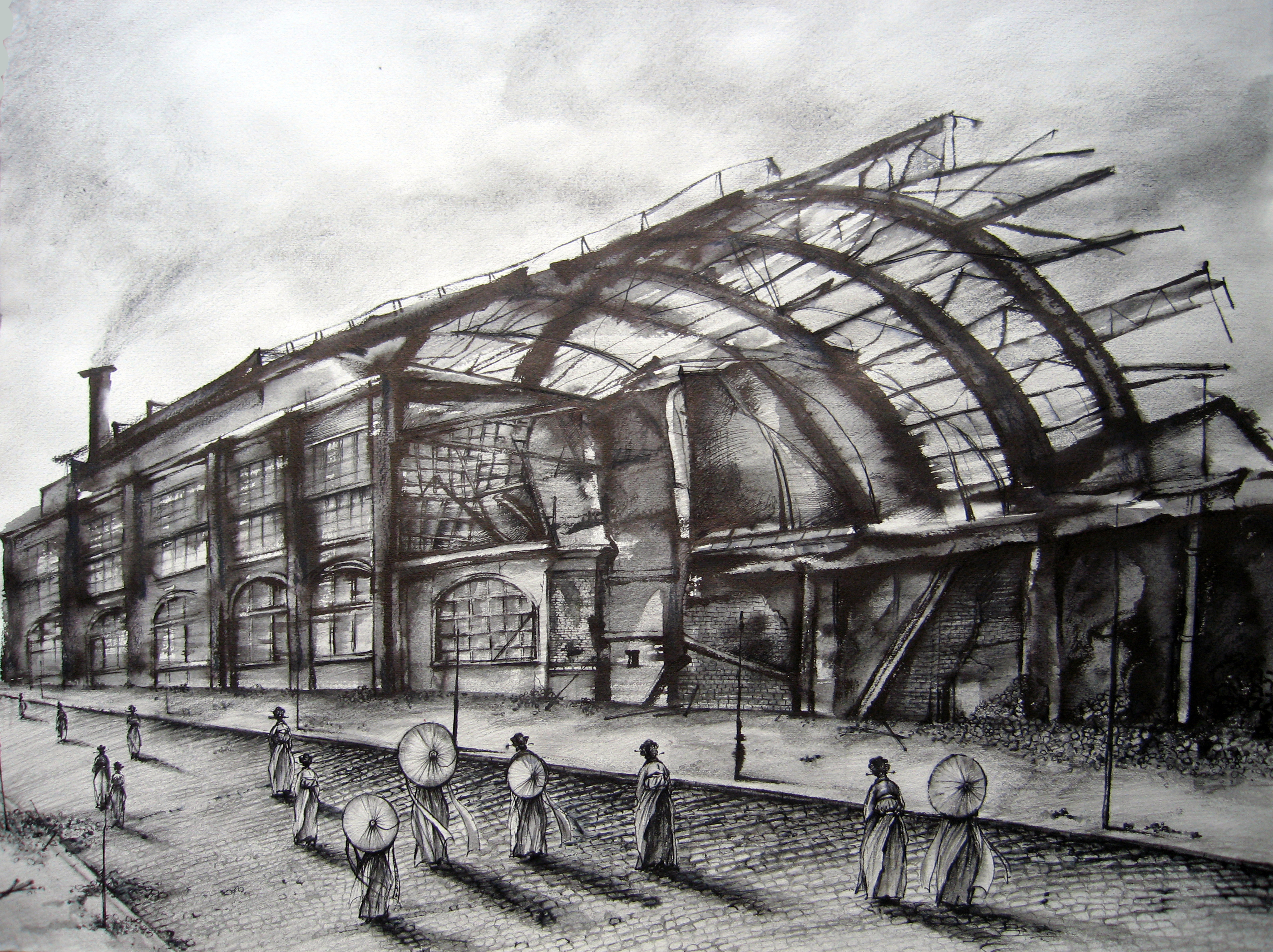
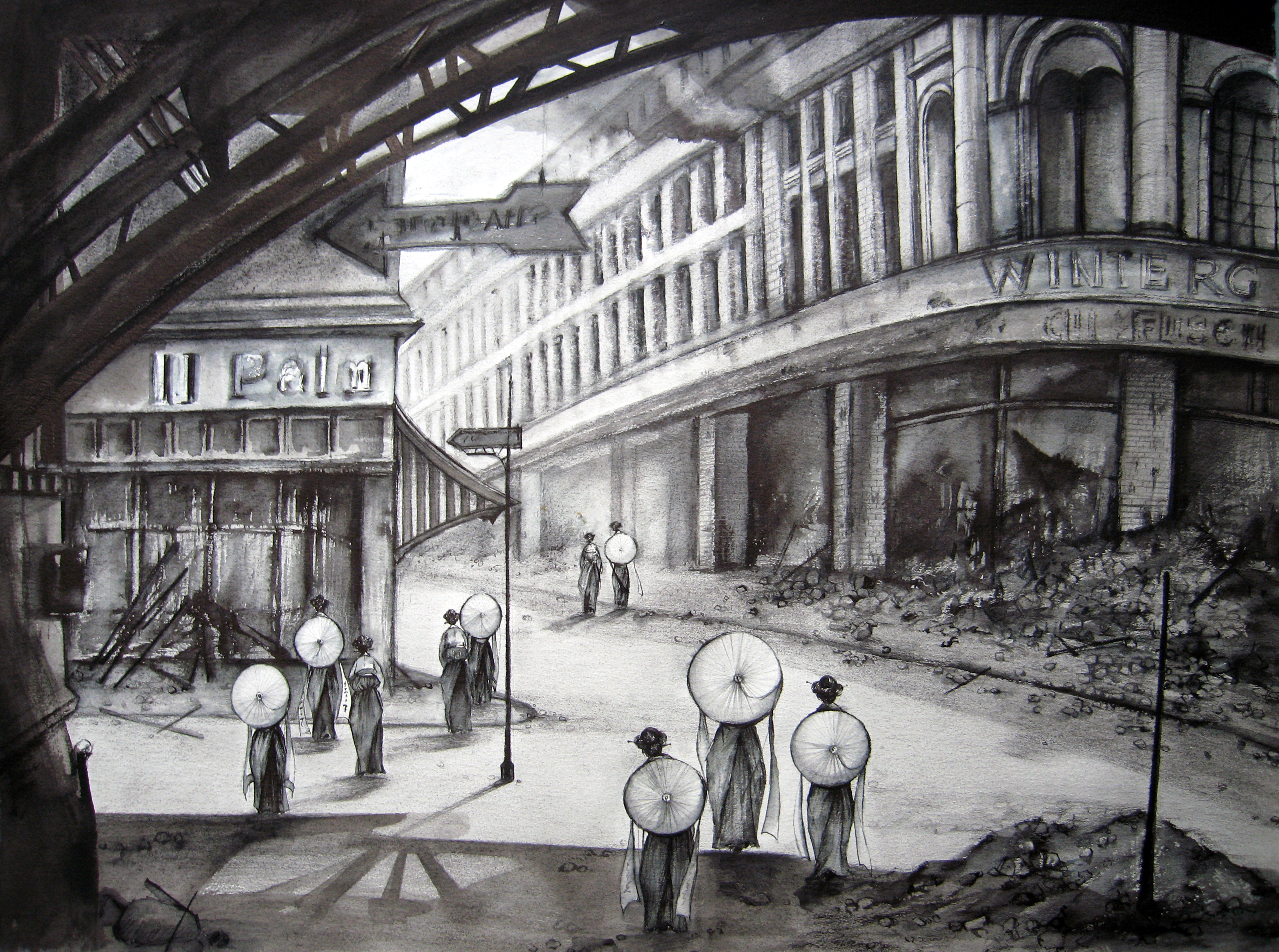









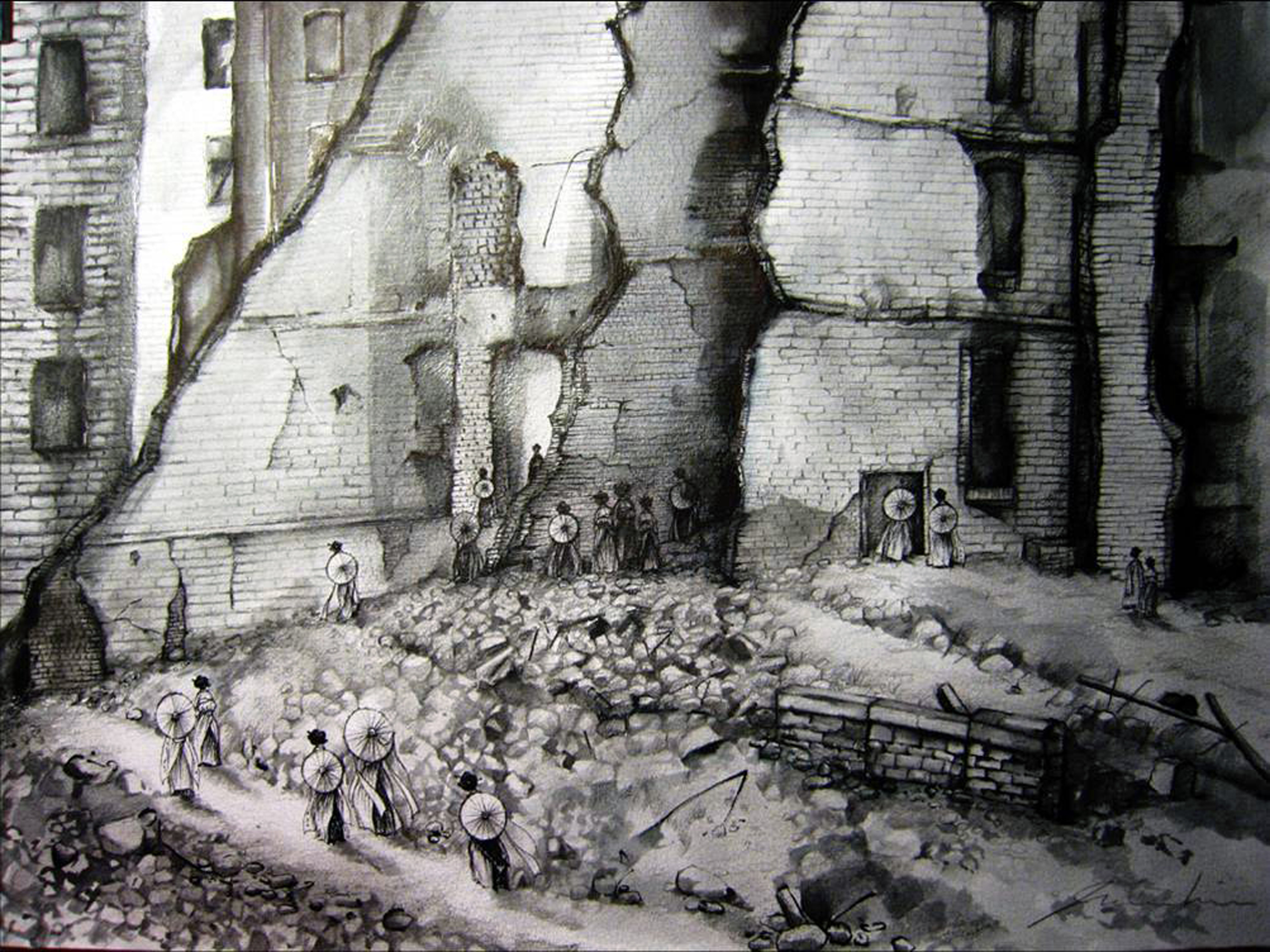


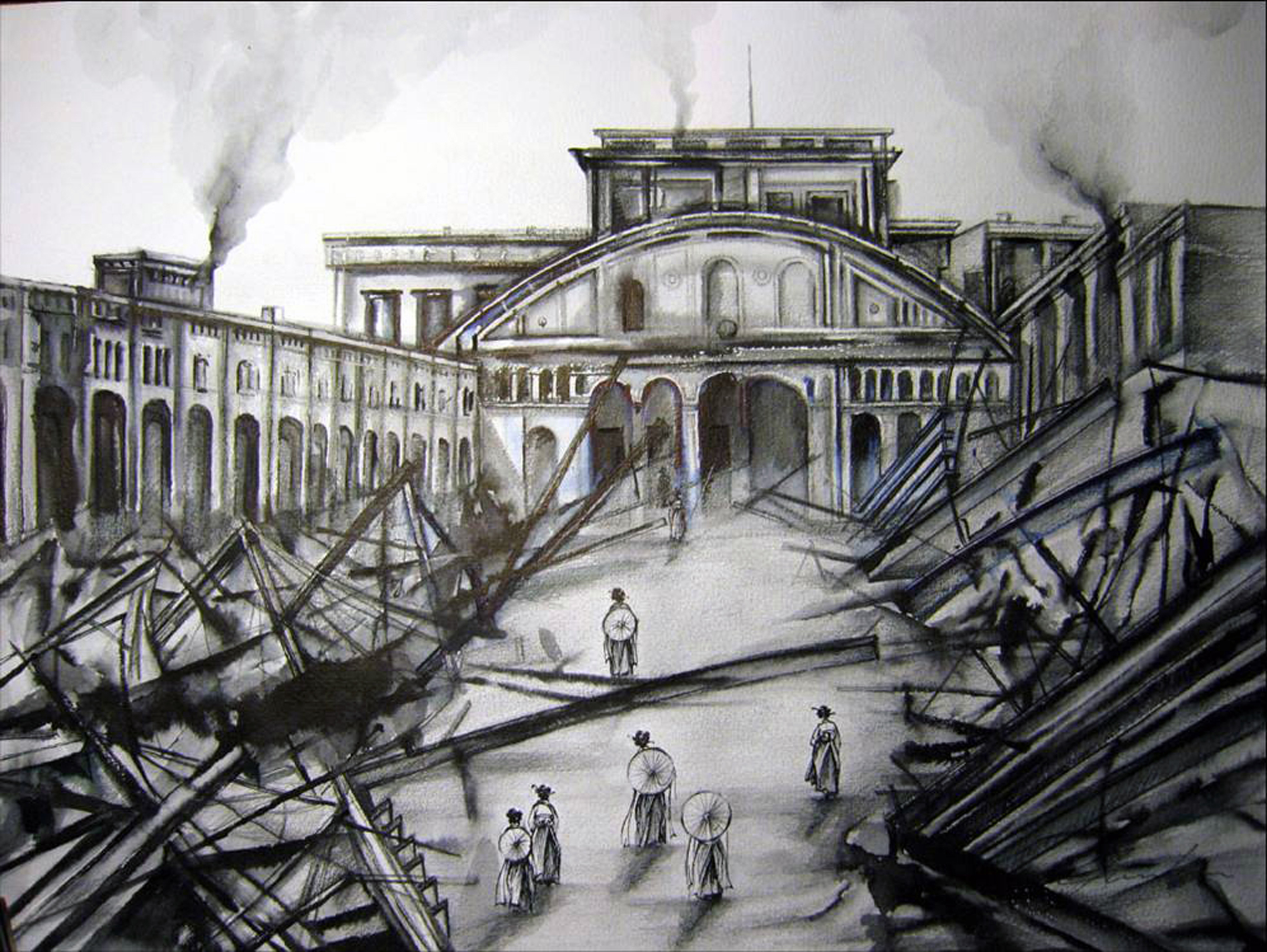
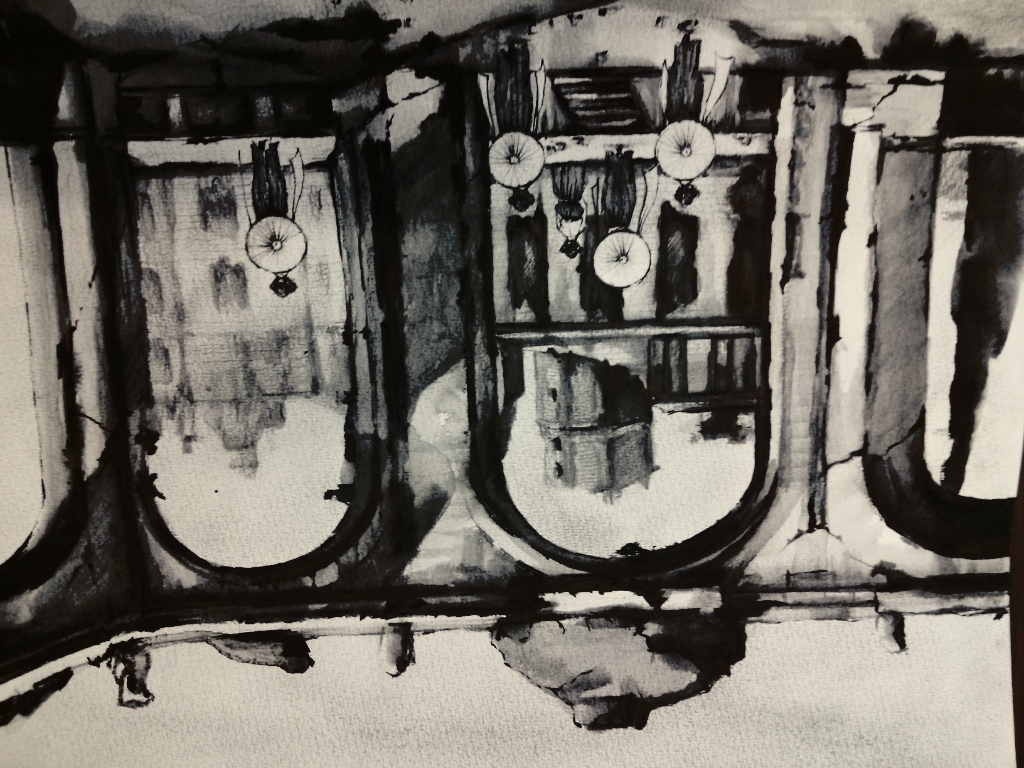

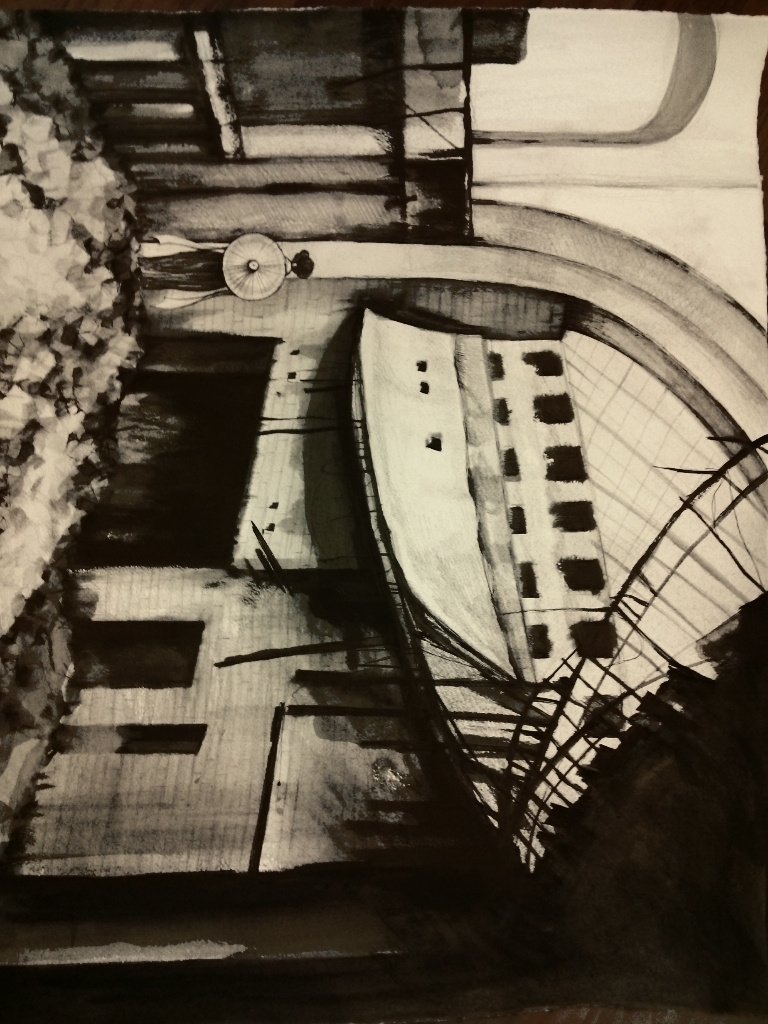

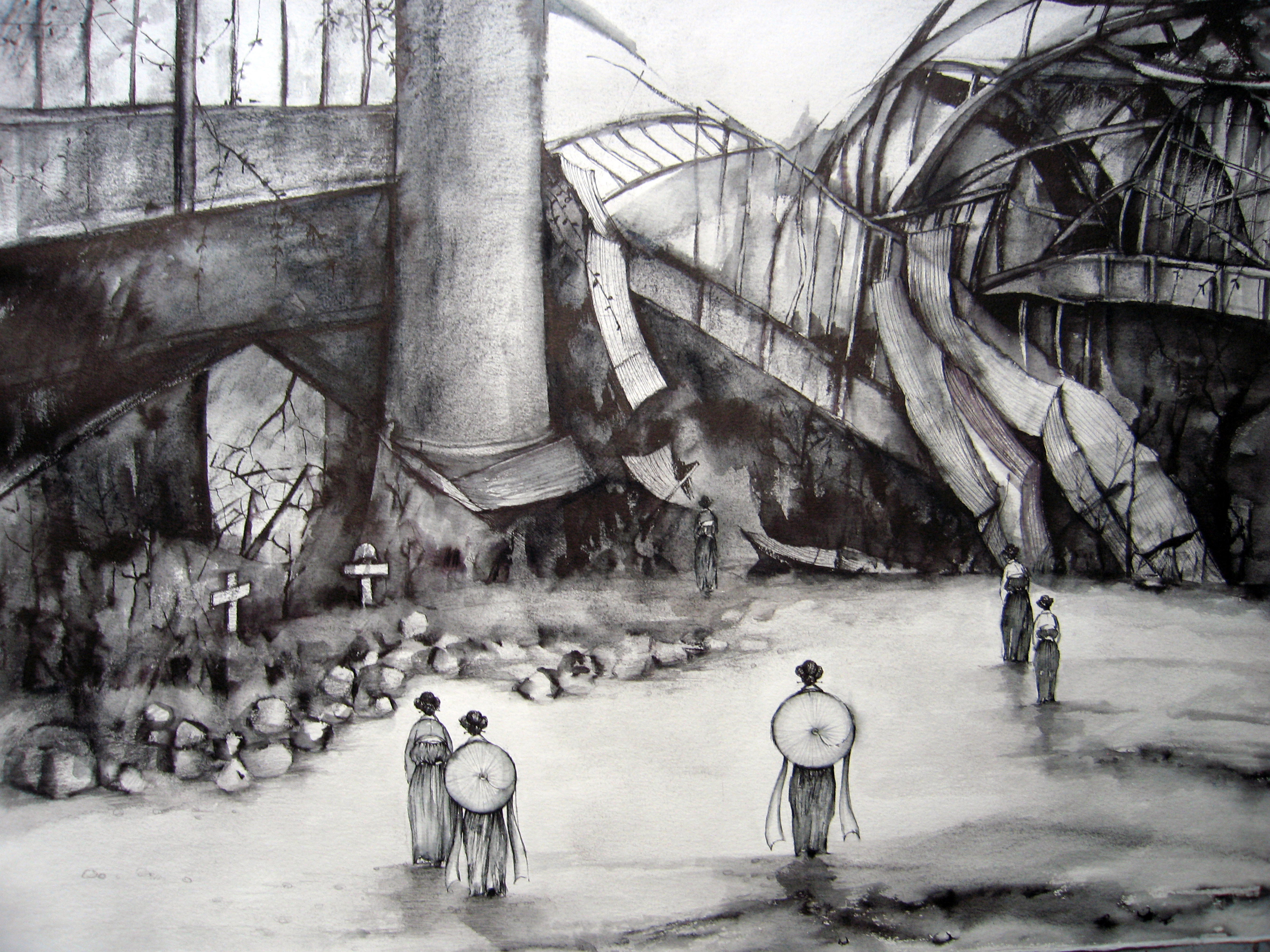

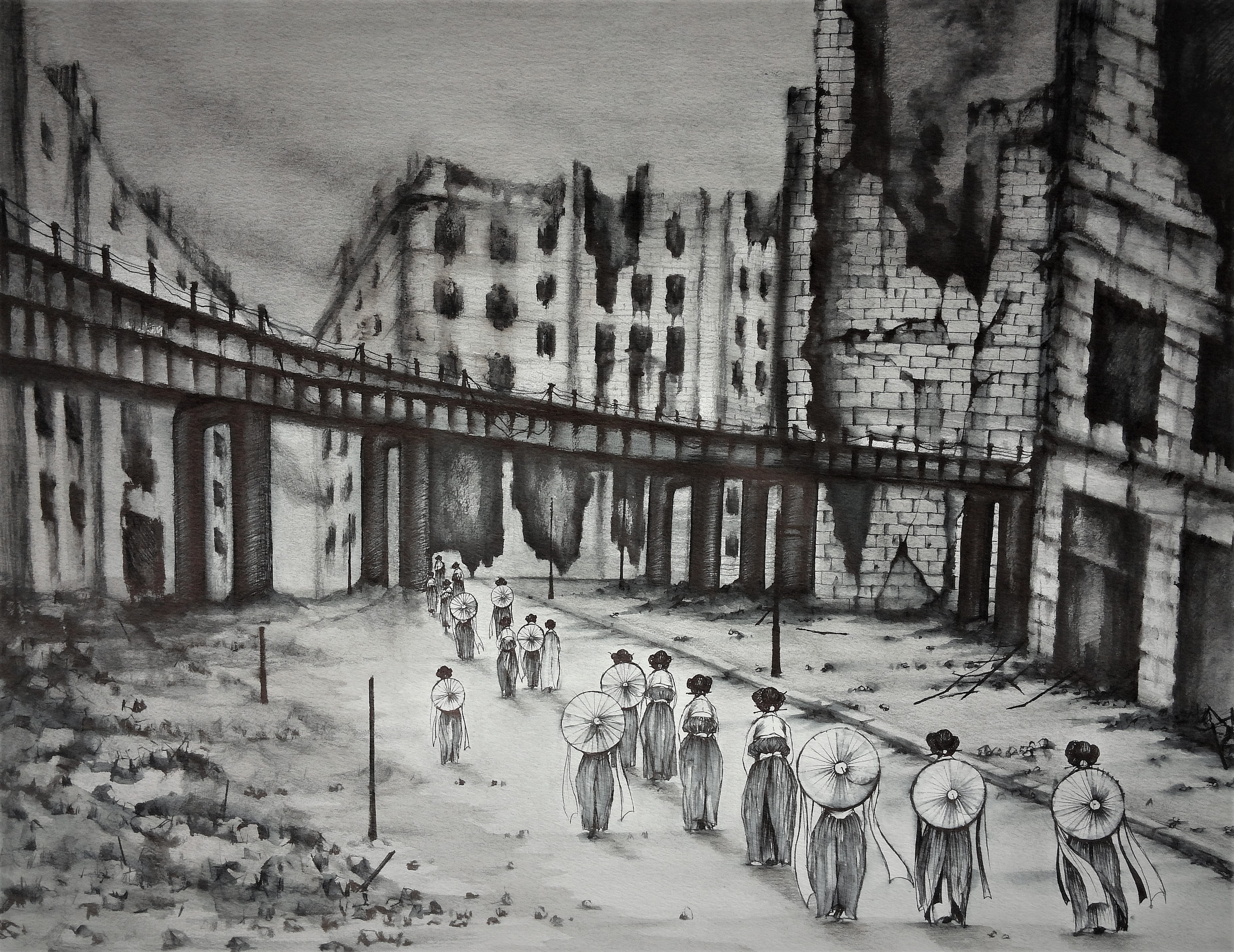
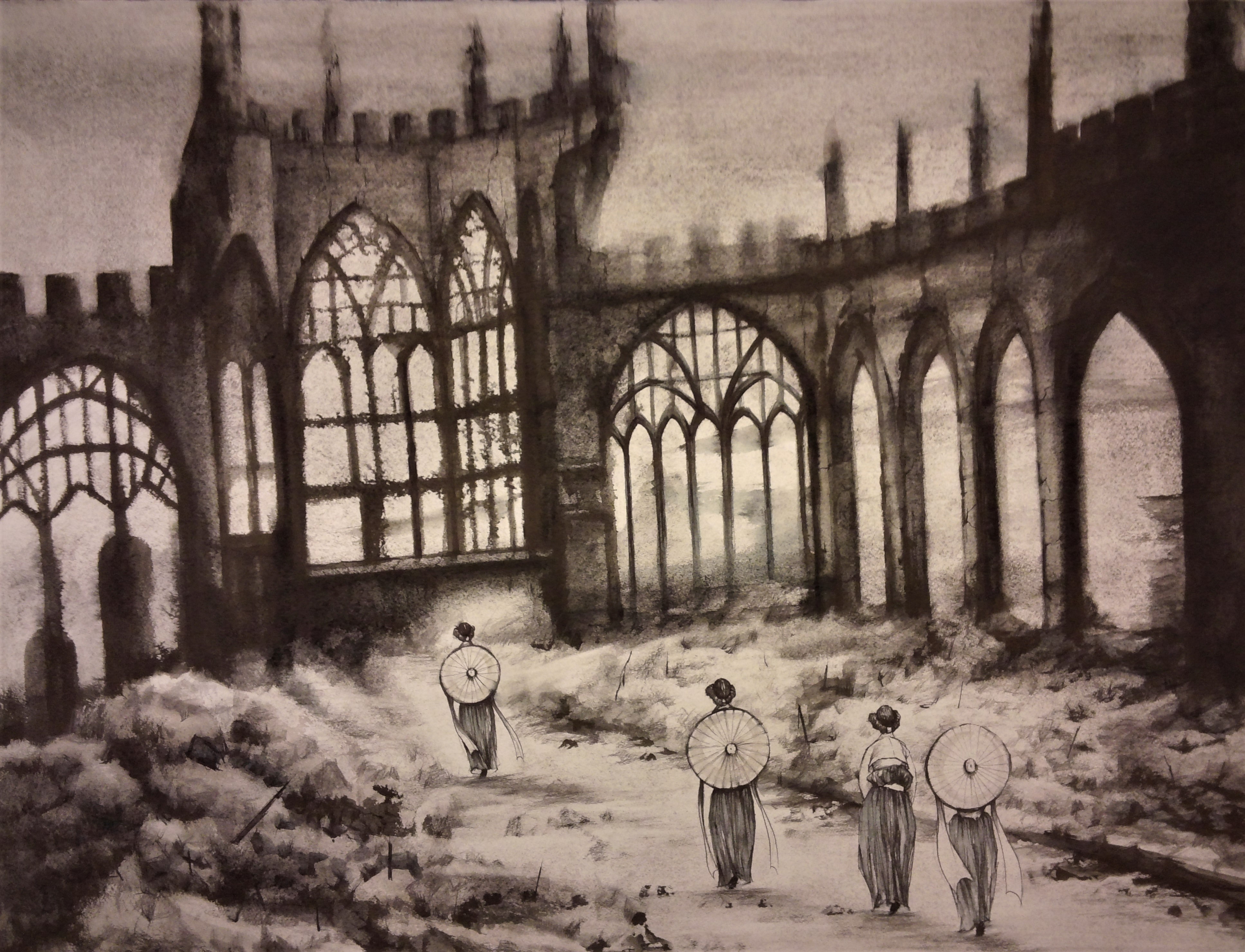


Truemmerfrauen in Germany after Second World War
Phalanxen von Koreanische Geisha laufen durch die Ruinen deutscher Städten. In diese Bilder schmelzen zusammen die Nachkriegsgeschichte Koreas und Deutschlands.
Die Zeichungen von Jinran Kim zeigen ein fantastisch verfremdetes Berlin:
Die Trümmerlandschaften von 1945 werden zur Kulisse für Geishas, die allein oder zu zweit ihrer Wege ziehen (Beispiel: Geishas am Hackeschen Markt).
Die Surrealität der deplazierten Geishas zeigt ein beinah unwirkliches Fremdsein in der Welt und spiegelt damit Erfahrungen Jinran Kims, die 1994 im Alter von 26 nach Berlin kam - in eine Stadt, deren Geschichtsträchtigkeit sie bis heute fasziniert.
Why Geisha appear in my drawing?
The original meaning of Geisha is the person who lives with art like an
artist. In my work showing the geisha in ruins means kind of message of our
invisible hope and artistic fantasy for next vision of future, I feel innocence
laughing of Geisha in ruins
Vandalism
When I touch the gunshot trace on the old buildings I feel forgotten
history
I walk around Berlin and I start drawing with my imagination like Take
picture make into ruins which I saw. Vandalism is one of our basic instinct
even we lost many important valuable historic things moral way it should not
happen and make stop it but when I drawing ruins series I feel strange ecstasy
it awake aggressive destroying vandalism of
human basic instinct
My generation since I born I just saw everyday built new building,
renovate, restorer, fresh painted wall everywhere I wanted express the contrast
“aesthetic of ruin” the place of ruin bring the invisible hope, all kind of
possibility, potential.
Text by Jinran Kim
![]()
The original meaning of Geisha is the person who lives with art like an
artist. In my work showing the geisha in ruins means kind of message of our
invisible hope and artistic fantasy for next vision of future, I feel innocence
laughing of Geisha in ruins
Vandalism
When I touch the gunshot trace on the old buildings I feel forgotten
history
I walk around Berlin and I start drawing with my imagination like Take
picture make into ruins which I saw. Vandalism is one of our basic instinct
even we lost many important valuable historic things moral way it should not
happen and make stop it but when I drawing ruins series I feel strange ecstasy
it awake aggressive destroying vandalism of
human basic instinct
My generation since I born I just saw everyday built new building,
renovate, restorer, fresh painted wall everywhere I wanted express the contrast
“aesthetic of ruin” the place of ruin bring the invisible hope, all kind of
possibility, potential.
Text by Jinran Kim
